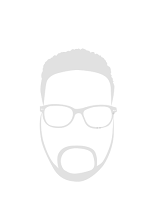Having watched a film about Helvectiva during our last lecture, we were tasked with discussing two typefaces; describing their characteristics, strengths and weaknesses.
First typeface - Foundry Gridnik
Influence - Foundry Gridnik is a geometric, sans serif typeface designed by Wim Crowel. The influence behind the typeface came from Wims devotions to grids and systems. The typeface was refined from the single weight monospaced typeface's for typewriter use in the 1960s and it is the digital version of the typewriter typeface Olivetti Politene, however the typeface was never released.
Characteristics - Froundry Gridnik contains even weight monolines which means all the lines are of equal thickness, they have an angular structure and visible grid lines with 45 degree corners and all the characters are based on a square grid.
Strength - Due to it's focus on grids and systems I believe the froundry gridnik typeface carries an undertone of modern and almost futuristic like. The even weight, angular structure and visible grid lines look and feel of the typeface is very bold and strong.
Weaknesses - However because of the look and feel of this typeface I do feel that it makes it's use compromisable what I mean is that it's usage could fully depend on it's context. I wouldn't imagine that the typeface would be used to advertise a classic event being held at a theatre, it wouldn't marry up with the content hosted at the theatre, furthermore it will lack consistency if displayed in that way for example.
Second typeface - Verdana
Influence - Verdana is a modern humanist, sans serif typeface designed by Matthew Carter. The influence behind the typeface came from the challenges of displaying type on screen. Designed by Matthew and hand hinted by the leading hinting expert Tom Rickner. The typeface was designed to be legible at small sizes on low resolution computer screens. The typeface was released in 1966.
Charactersistics - Verdana contains generous width and spacing of it's characters and is key to the legibility of the font on screen. Matthew designed Verdana with wider proportions and loose letter spacing as it has a large x-height (tall lower case characters). The counters and apertures are wide in order to keep strokes separate from one another. Whereas the bold weight of the typeface is thicker than it would be for fonts of its kind which are also used for print, this shows that it suits the limitations of the onscreen display.
Strength - Verdana is readable at small sizes on low screen resolution PC screens, it has clear legibility which makes it key to how it's viewed on a computer screen. The apertures and counters are wide to keep the strokes separate from one another and similarly shaped letters are designed to appear different to increase legibility and cohesion of body text that other typefaces don't necessarily have.
Weaknesses - Due to it's small size it has to depend on higher resolution screens for the fonts to be fully appreciated what happens if there are no higher resolution screens? Quality of how the typeface is seen is also dependant on screen size.












No comments:
Post a Comment